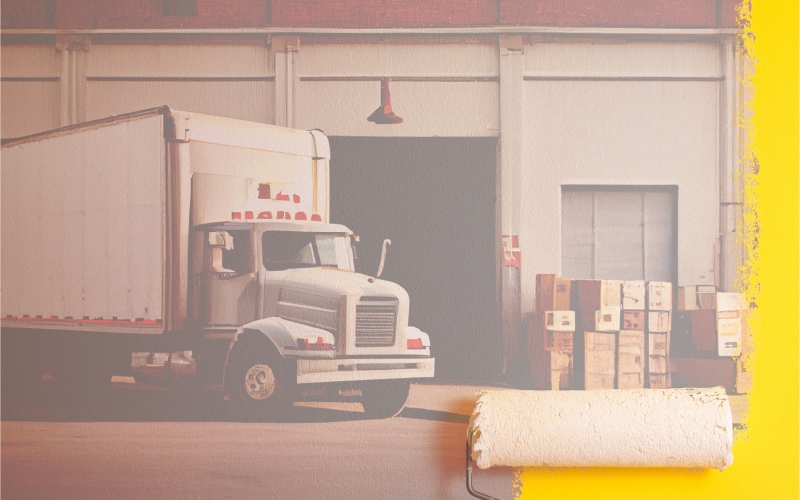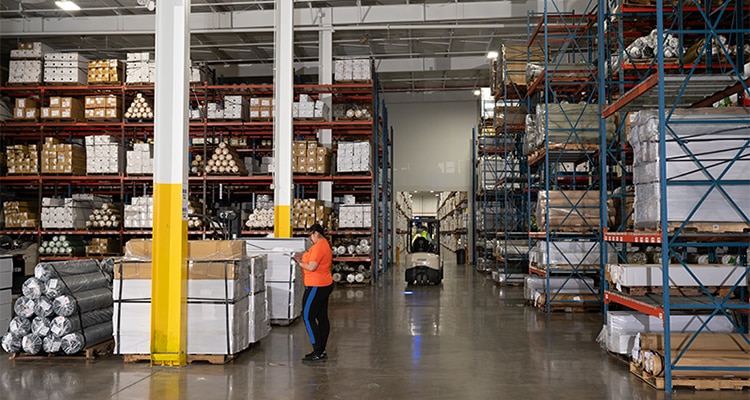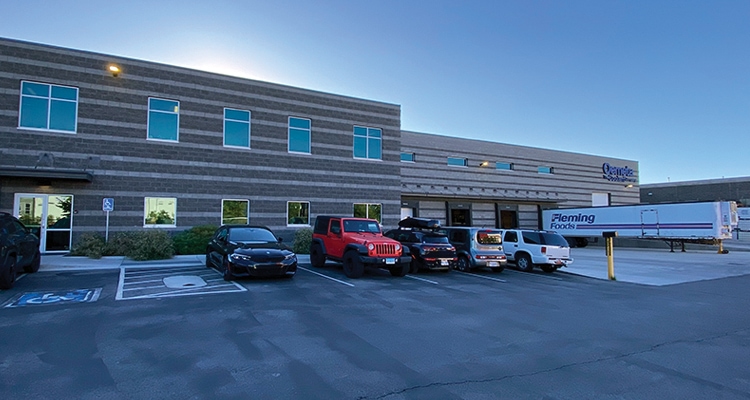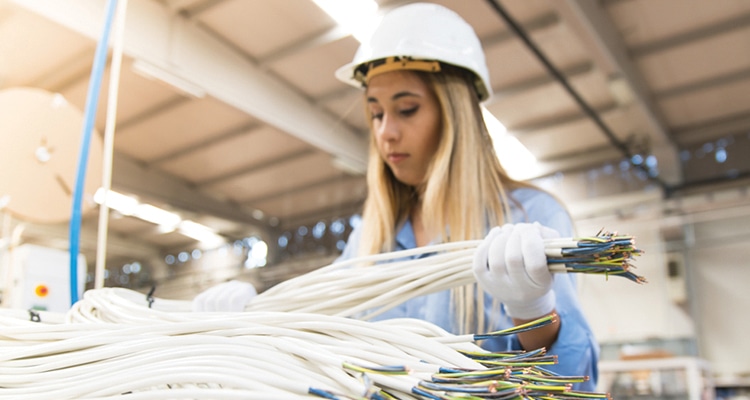Primed for Growth: 3PL Partnerships Help Shippers Roll With It

Despite persistent supply chain challenges and uncertainties, now is the time to prep your supply chain for future growth. 3PLs have the talent to take you there.
Looking to cut supply chain costs? Improve customer service? Source crucial commodities in a volatile world? Find affordable distribution space?
Whatever your goals, third-party logistics (3PL) service providers are ready to help you meet them—now and as you plan and prepare for future growth. 3PLs bring expertise and experience, advanced technology tools, access to capacity, and significant economies of scale to just about any challenge that shippers face. The end result? Your supply chain is primed and ready for success.
Cost Reduction Gets Glossy
Consider the perpetual drive to reduce expenses. Although freight rates, particularly spot rates, have dropped a long way since the early post-pandemic days of 2022, moving a load still isn’t cheap.
“Our drivers are paid a lot more now than they were in 2019,” says Jeff Bullard, senior vice president of operations at asset-based 3PL Penske Logistics in Reading, Pennsylvania. “Equipment and insurance costs are going up.”
To offset those increases, Penske helps customers fine-tune their logistics networks to make them more efficient.
Nexterus, a 3PL based in Baltimore, also helps shippers re-engineer their networks for greater economy and efficiency. “A lot of manufacturing companies, in particular, have learned to deepen their supplier bases, embrace better processes, and utilize technology to identify how to ship smarter and where their warehouses need to be,” says Ryan Polakoff, the company’s president.
Also, Nexterus secures good rates for shippers by forging deep partnerships with carriers. “It’s about getting into the carrier’s mindset, trying to understand how their network works, where they have capacity, where they do and don’t want freight,” Polakoff says.
Brand owners trying to cut costs might ask 3PLs to help reduce inventory carrying charges. “They realize they have too many SKUs [stock keeping units], and they’re not focused on their top movers,” says Bryan Corbett, vice president of sales and marketing at Barrett Distribution in Franklin, Massachusetts.
Barrett has developed many well-tested practices that help its customers better match inventory to sales and gain other supply chain efficiencies.
One of those practices is standardization. For example, consider the packaging used in the dedicated distribution center that Barrett operates for Carhartt, the workwear brand.
“Every box is the same size in the active storage zones,” Corbett says. That makes it easier to implement automation, including robotic picking. To further enhance productivity, Barrett is also implementing standard box sizes for outbound shipping.
In addition, Barrett uses storage engineering to keep products moving efficiently. “Once you get a standardized profile on the inbound and outbound, then you can design a layout on the floor that maximizes units per hour,” Corbett says.
It’s not just about cost. 3PLs often provide digital tools that help shippers develop effective supply chain strategies, modify those strategies as needed, and execute effectively on their plans.
Not every company can rely on in-house resources to implement and maintain such technology. “Many times, one of the biggest inhibitors to change is, ‘How am I going to do this technically?’”says Brent Cavanaugh, senior vice president of strategic sales at Redwood Logistics in Chicago.
Brushing up on Technology

Adding their own warehouse space is often too costly for manufacturers and wholesalers. Instead, they turn to 3PLs such as ELM Global to help meet demand while retaining flexibility.
Redwood is a 4PL, providing traditional 3PL services, plus other services focused on technology integration and orchestration.
Its flagship offering, Redwood Connect, is a “platform-as-a-service” that can integrate a wide range of supply chain solutions and data sources. The platform enables Redwood Logistics to get new software up and running and producing results much faster than many shippers can, according to Cavanaugh.
“Being able to deliver on that investment in a matter of weeks or months rather than years is critical, especially in this post-pandemic landscape, where capital markets are tight and a lot of companies are held to stringent goals,” he adds.
Another benefit 3PLs provide is greater access to capacity. For instance, now that fast fulfillment is the norm in ecommerce, manufacturers and merchants want to locate fulfillment centers closer to consumers.
“That has created a shortage of industrial space, because everybody needed to expand their operations,” explains Bill Conboy, president of ELM Global Logistics in Brentwood, New York.
As demand for warehouse capacity has pushed up prices, manufacturers and wholesalers often find it too costly to add new space of their own, Conboy says. But an asset-based third-party logistics provider can meet the need, as ELM does with several facilities in the New York metropolitan area.
Broad Strokes
Using a 3PL’s warehouse not only gives a shipper a broader footprint than it might be able to maintain on its own, but it also makes the company more agile. It can store more or less inventory, and use more or less labor, as demand for its products rises and falls over time.
“There’s no contract obliging the shipper to space or man hours,” Conboy says.
When a company relies on its 3PLs to provide space in their warehouses, those facilities can also become integral links in the shipper’s supply chain.
That’s the case with one ELM client, a large manufacturer of corrugated boxes. The manufacturer ships rolled paper by rail to ELM, which holds the product in one of its facilities. Then ELM provides the production line with a steady stream of paper, as needed.
“We deliver up to 15 or 20 loads a day to their manufacturing plant,” says Bill Conboy, ELM’s president. When the boxes are finished, ELM arranges to deliver them to customers such as Amazon.
A large canning company in California also relies on 3PLs to provide a network of distribution facilities throughout the United States. This reduces the distance that product needs to travel from warehouse to customer to fulfill an order.
“The company decided to rail inventory to ELM and allow their customers to pick up here instead of opening their own facilities on the East Coast,” Conboy says. “We manage the inventory, pick the orders, and load the trucks.”
The manufacturer gains faster access to customers without having to invest in its own facilities or hire its own labor.
While some 3PLs own warehouse space that they lease to customers, others specialize in helping companies decide where to place their products; then they help them find appropriate facilities. The search isn’t easy. “Public warehouse space isn’t nearly as available as it used to be,” says Polakoff.
To help its customers in the hunt, Nexterus recently formed a reselling partnership with Warehowz, an online warehousing marketplace that lists more than 2,500 properties. Warehowz’s service is as quick and easy to use as Airbnb, Polakoff says.
Staying low on the risk ladder
Supply chain risk is a perpetual concern, but the pandemic shone an especially glaring light on the issue. As the virus shut factories in China and elsewhere, manufacturers learned for the first time that their products were tied to vulnerable regions—perhaps because a supplier’s supplier sourced from one of those locations.
“Now there’s an increased desire to try to map the supply chain to see where product is coming from, so they can better measure risk in their supply chain,” says Bullard.
Pre-COVID, Penske already had a crisis management platform that it used to forecast how hurricanes and other hazards would impact customers’ logistics networks. During the pandemic, the company fed virus transmission data from Johns Hopkins University into that platform and built models to predict where factories might soon shut down, so companies could plan for that disruption.
Penske is now enhancing its platform to account for more potential disruptions, such as port congestion, geopolitical conflict, civil unrest, and problems at the U.S.-Mexico border. Based on those predictions, the 3PL will help customers determine how to mitigate their risk.
Penske also helps customers figure out which products they should continue to procure from far-flung locations, which they should source closer to home, and whether it’s best to buy a particular product from one vendor or several.
Using models that Penske has developed, its experts can help a customer redesign its network for the new sourcing strategy—deciding, for example, whether it needs a warehouse near its U.S. factory or a consolidation center in a country where it has multiple suppliers. “We can cost out the physical parts of the supply chain and then work with them on whether there are any other risks that this will expose them to that they are not considering,” Bullard says.
In today’s business environment, it’s a rare company that can mitigate every risk and seize every growth opportunity solely on its own. That’s why so many companies, large and small, augment their resources by forming strong partnerships with 3PLs and priming their businesses for growth.
PRIME PARTNERSHIP: Taking Root in the U.S.

In 2015, Oemeta, a German manufacturer of cooling lubricants for industrial use, was trying to increase its North American presence. It had a warehouse in Canada, but for U.S. customers it mostly shipped products from Europe with help from a freight broker.
Seeking a better way to handle its fast-growing U.S. business, Oemeta formed a relationship with Nexterus, a 3PL based in New Freedom, Pennsylvania. “Our first round of work was to look at where their demand was in the United States and get a distribution center in place that made sense,” says Ryan Polakoff, president of Nexterus.
An analysis determined that Oemeta should locate a distribution center in Salt Lake City. But to keep things running while the manufacturer built that facility, Nexterus got Oemeta into a contract warehouse in Altoona, Pennsylvania, and began managing the company’s logistics operations.
“We switched our brokerage business to Nexterus, so they would handle all of our importing into the United States and some into Canada,” says D.J. Latford, chief supply chain officer at Oemeta in Salt Lake City. “We also used them as a 3PL for all our shipping needs throughout the United States.”
The Salt Lake facility opened in 2018. Along with a DC, it includes a manufacturing plant and Oemeta’s U.S. headquarters. Oemeta’s own employees staff the DC, but Nexterus continues to manage all the transportation and helps Oemeta develop strategies for future growth.
Nexterus makes Oemeta’s logistics operations much easier than they would be otherwise—for example, by helping Oemeta negotiate today’s complicated transportation landscape, Latford says. On the strategic side, Nexterus is now helping Oemeta expand its distribution network, choosing locations for new DCs in the Eastern U.S. and in Mexico.
Finding a reliable facility in Mexico is a particular challenge, Latford says. But with its modeling technology, Nexterus can search for locations that provide what Oemeta needs. “Nexterus offers studies to help shippers find the best locations and the best setups for their business,” Latford notes.
PRIME PARTNERSHIP: Better Data, All Tied Together

Based in New Berlin, Wisconsin, IEWC distributes wire and cable products and manufactures custom fiber assemblies, serving customers around the world. Several years ago, company leaders decided they needed to improve their logistics processes and make better use of their data.
“We weren’t satisfied with our data quality, reporting, and shipment level visibility, due to having separate processes for inbound and outbound freight,” says Gregg Mollen, senior global logistics manager at IEWC.
To meet its goals, the company might have implemented a transportation management system (TMS) on its own. But instead, it engaged with Chicago-based Redwood Logistics to implement the Oracle TMS.
“By partnering with Redwood, we could quickly utilize best practices designed specifically for the IEWC/Oracle TMS,” Mollen says. “And they would provide us with the ongoing technical resources to resolve any challenges or introduce continuous improvement opportunities.”
Using its Redwood Connect platform to link the various processes and systems, Redwood integrated the TMS with IEWC’s SAP enterprise resource planning (ERP) solution. The resulting system lets IEWC manage contracting, rates, and execution for both inbound and outbound freight on a single platform.
Since the system went live in February 2022, IEWC has gained better reporting and data, both overall and at the shipment level, Mollen says. The company employs the data to monitor shipments in transit and to manage and analyze shipment exceptions, among other uses.
Thanks to the new system, IEWC now gives its customers better information—and faster. “In addition, we have been able to exceed the baseline ROI cost savings, and the TMS allows us to continue to optimize our freight and actively mitigate freight costing changes,” Mollen says.
The company is also better equipped to inform customers about the status of shipments in transit, and to analyze delivery performance to make sure it’s meeting customers’ expectations.
